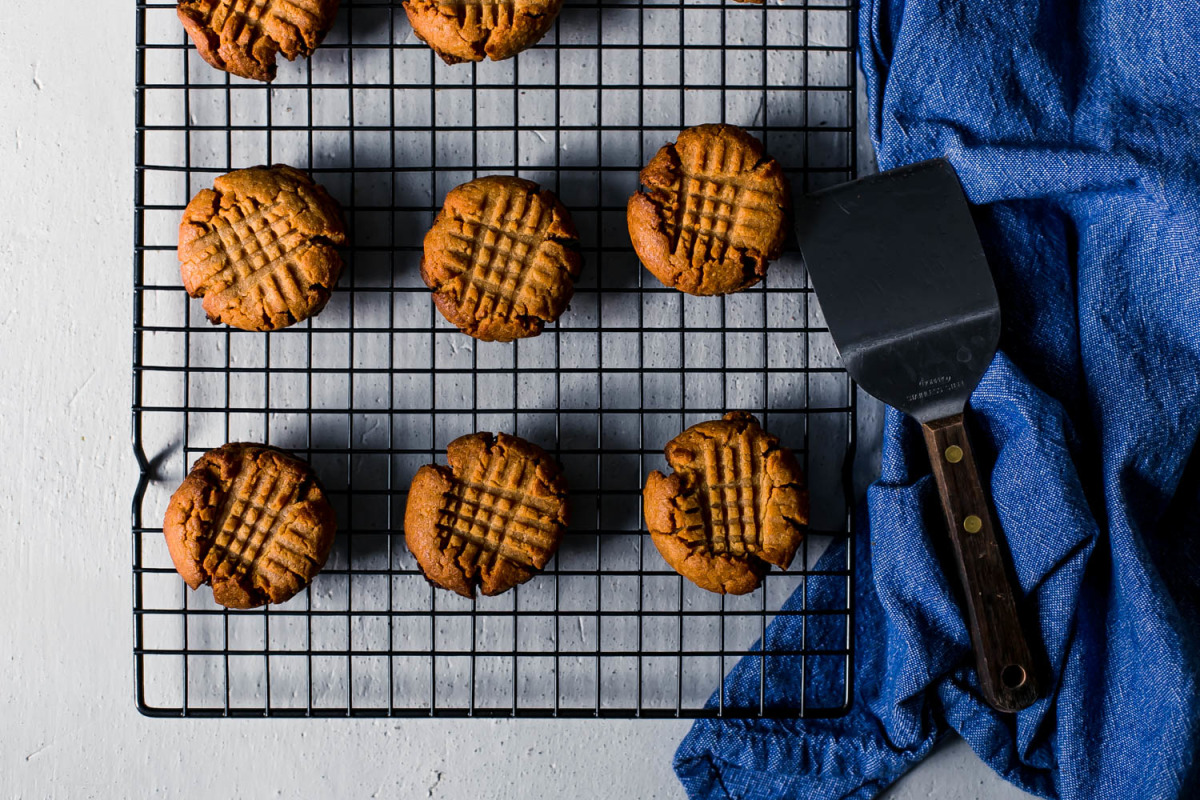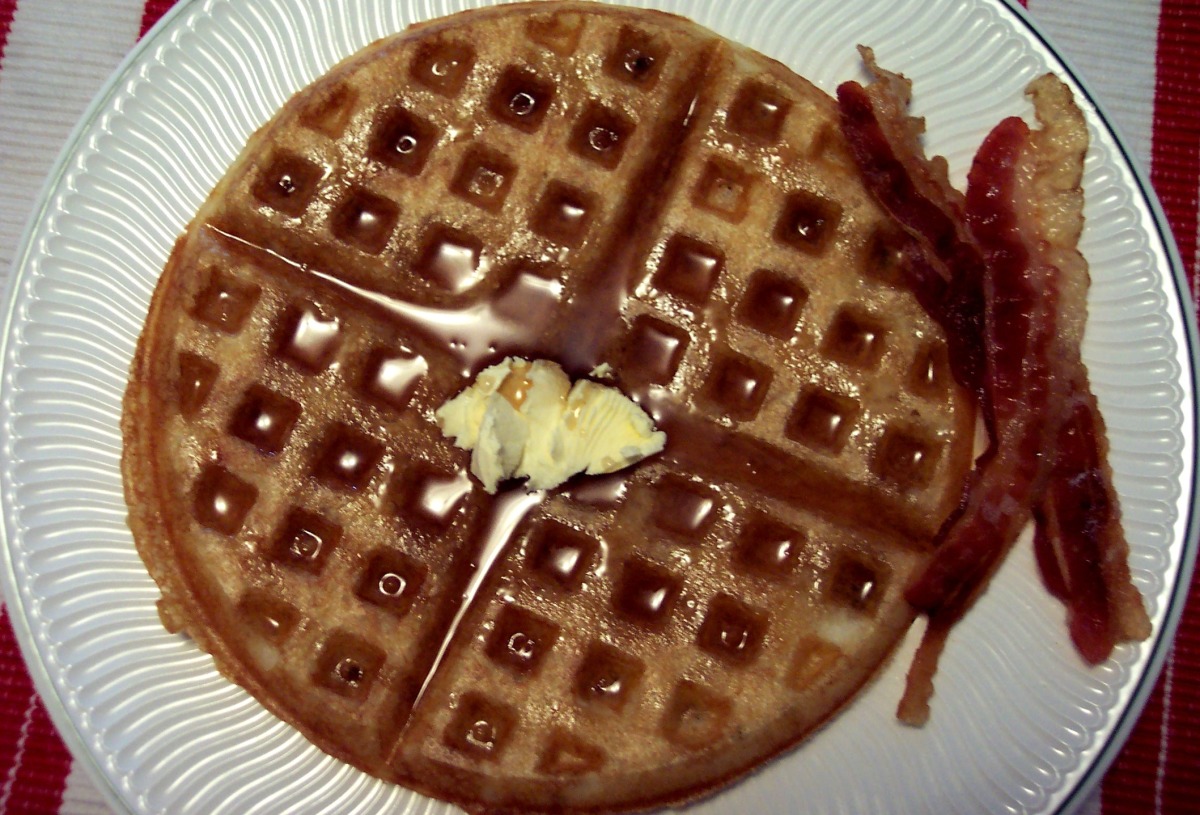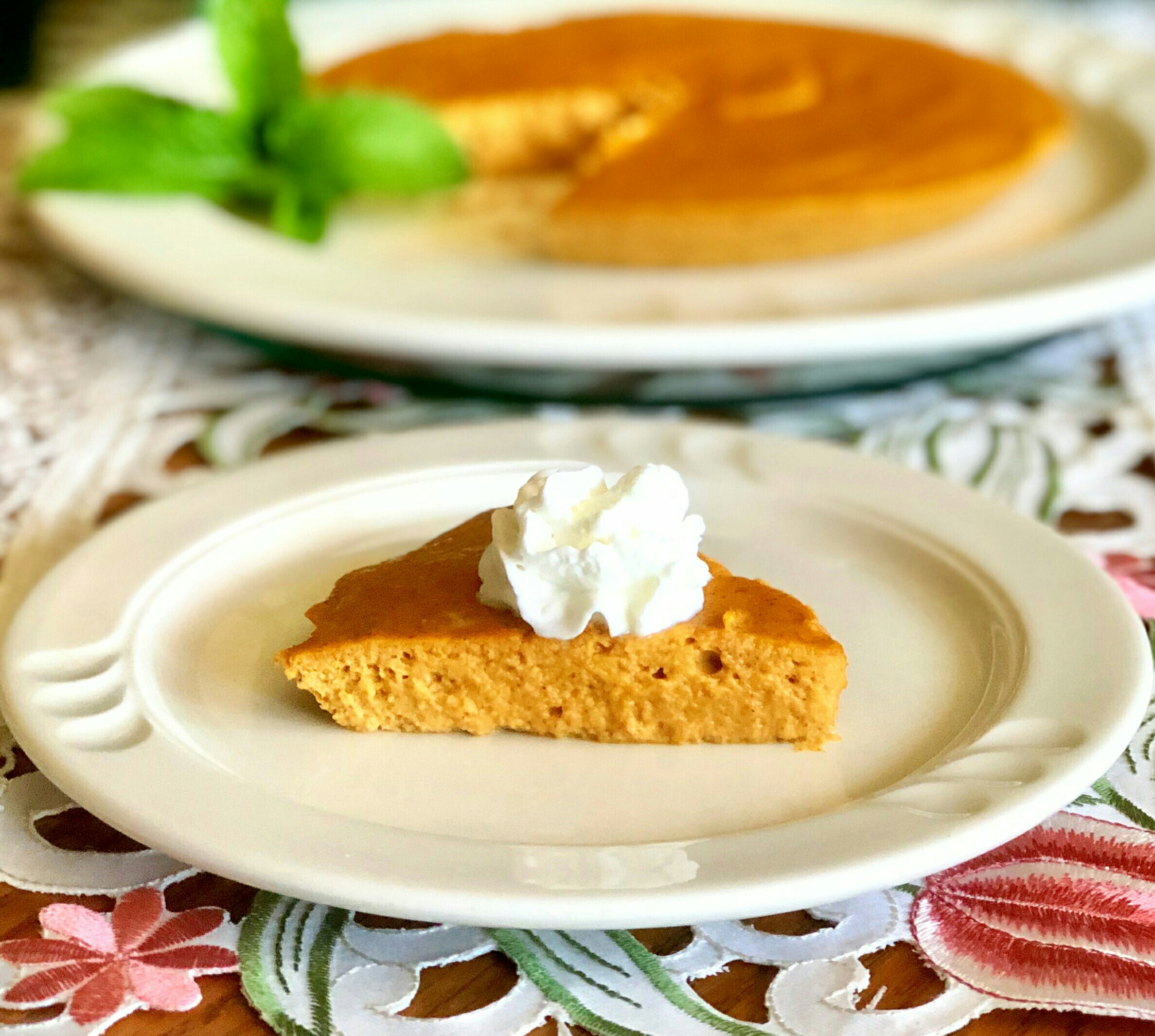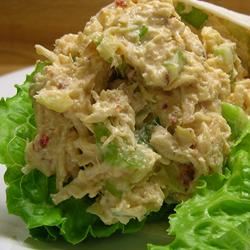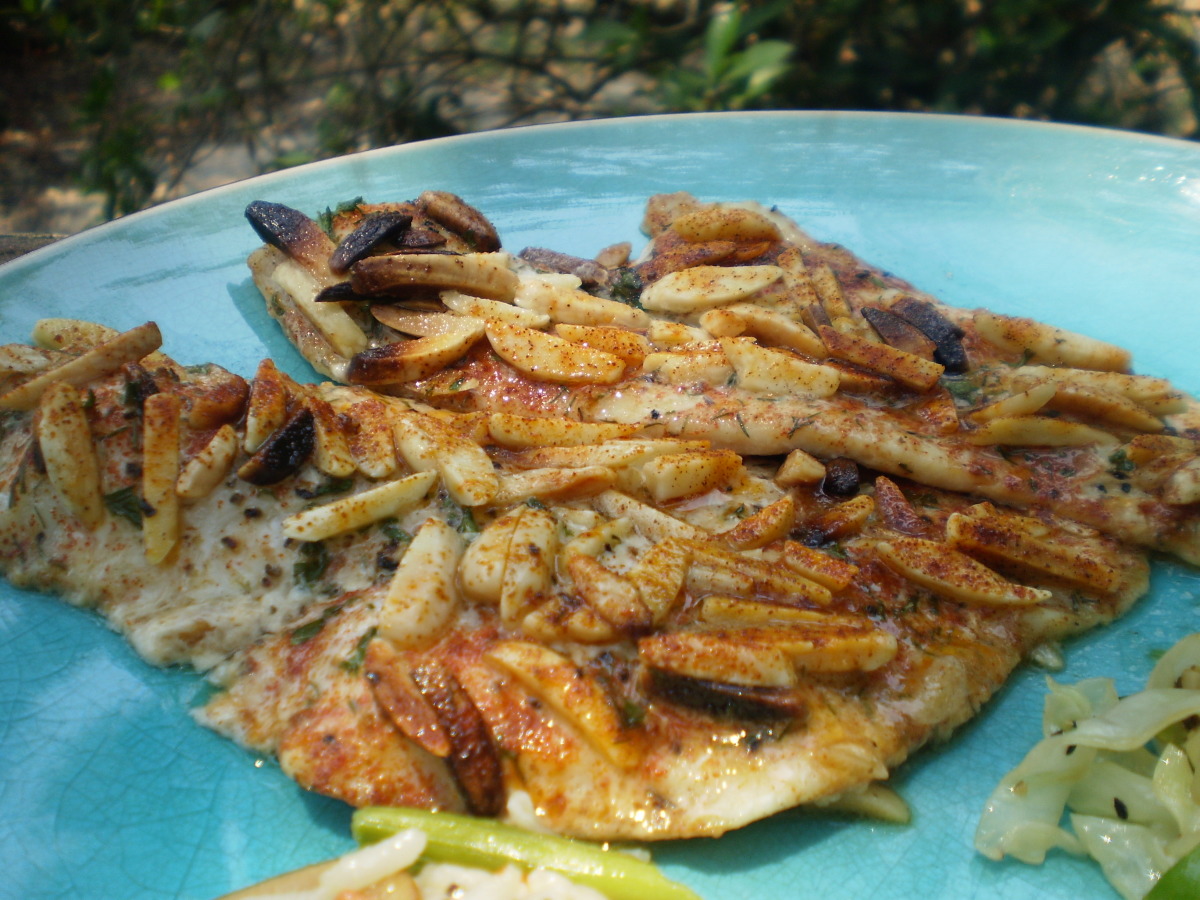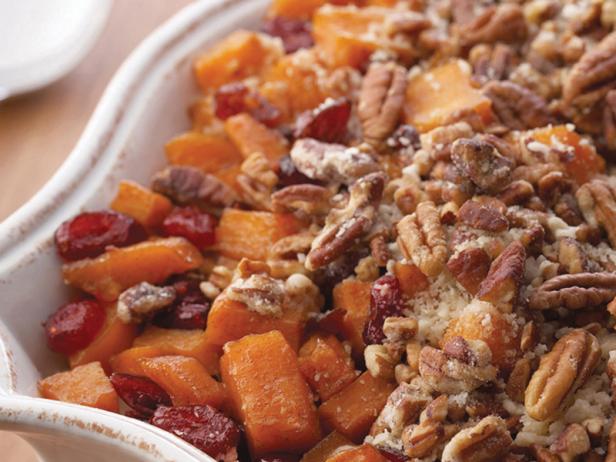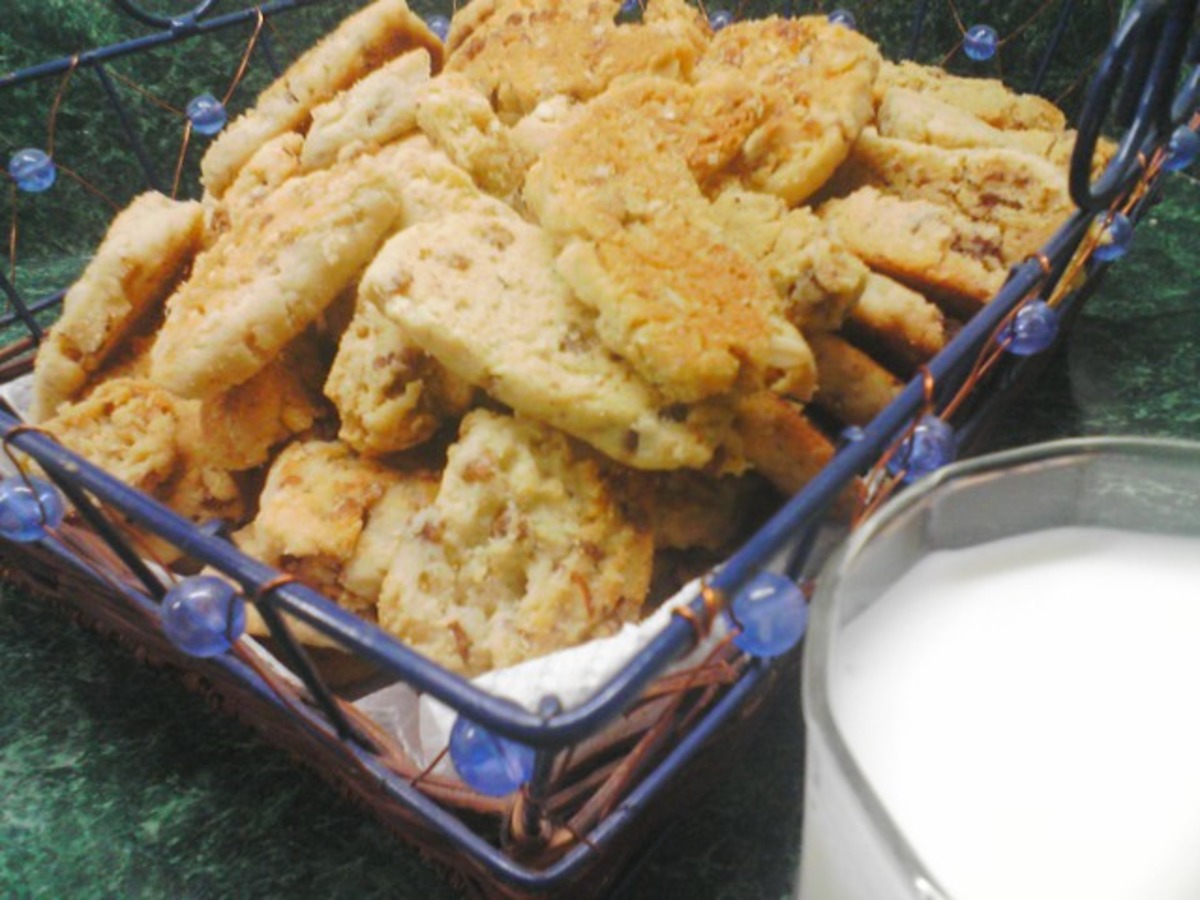**Experience the rustic charm of French-style country bread with our delightful recipes.**
Indulge in the authentic flavors and aromas of traditional French bread with our carefully curated collection of recipes. From the classic baguette to the hearty pain de campagne, each recipe offers a unique taste of the French countryside. Discover the secrets of creating the perfect crust, airy crumb, and distinctive flavor that makes French bread so beloved worldwide. Whether you're a seasoned baker or just starting, our detailed instructions and expert tips will guide you through the process of crafting these culinary masterpieces. Prepare to savor the warmth and comfort of freshly baked French bread, perfect for any occasion.
**Recipes included:**
* **Baguette:** Master the art of creating the iconic French baguette, with its crispy crust and chewy interior.
* **Pain de Campagne:** Experience the rustic charm of this traditional country bread, known for its hearty flavor and dense texture.
* **Fougasse:** Impress your friends and family with this stunning bread adorned with intricate patterns, perfect for sharing.
* **Brioche:** Treat yourself to the rich and decadent brioche, featuring a soft, fluffy crumb and a hint of sweetness.
* **Pain au Levain:** Discover the tangy and slightly sour notes of this sourdough bread, made with a natural starter.
* **Baguettes with Everything:** Elevate your baguette game with this variation topped with a savory blend of sesame seeds, poppy seeds, and garlic.
FRENCH COUNTRY BREAD
A simple European-style country bread. Just enough whole wheat to give it some flavor but not so much that it's heavy. I use an overnight starter to give it extra flavor.
Provided by Stephen Carroll
Categories Bread Yeast Bread Recipes White Bread Recipes
Time P1DT2h40m
Yield 30
Number Of Ingredients 8
Steps:
- The night before baking the bread prepare this starter: In a medium sized non-metal mixing bowl dissolve 1/2 teaspoon active dry yeast in 1 cup warm water. Add 1 1/2 cup bread flour and mix well. Cover and let sit overnight at room temperature.
- The next day: In a large mixing bowl, dissolve the 2 teaspoons yeast in the 2 cups warm water. Add the starter mixture, the whole wheat flour, 3 cups bread flour and the salt; stir until well combined. Add the remaining bread flour, 1/2 cup at a time, mixing well after each addition. When the dough has pulled together, turn it out onto a lightly floured surface and knead until smooth and elastic, about 8 minutes.
- Lightly oil a large bowl, place the dough in the bowl and turn to coat with oil. Cover with a damp cloth and let rise in a warm place until doubled in volume, about 1 hour.
- Grease two 9x5-inch loaf pans. Deflate the dough and turn it out onto a lightly floured surface. Divide the dough into two equal pieces and form into loaves. Place the loaves into the prepared pans. Cover the loaves with a damp cloth and let rise until doubled in volume, about 45 minutes. Preheat the oven to 425 degrees F (220 degrees C).
- Bake in the preheated oven for about 30 minutes or until the top is golden brown and the bottom of the loaf sounds hollow when tapped.
Nutrition Facts : Calories 101.2 calories, Carbohydrate 20.4 g, Fat 0.5 g, Fiber 1.1 g, Protein 3.6 g, SaturatedFat 0.1 g, Sodium 156.6 mg, Sugar 0.1 g
PAIN DE CAMPAGNE - COUNTRY FRENCH BREAD
I got this recipe out of a novel and made some minor changes. It is a yummy French bread that is worth the wait.
Provided by violet
Categories Bread Yeast Bread Recipes White Bread Recipes
Time 5h25m
Yield 8
Number Of Ingredients 8
Steps:
- To make the sponge, whisk the 1/2 teaspoon yeast in 1/2 cup warm water. Stir in the whole wheat flour until the mixture resembles a thick batter. Beat for about 100 strokes to form longs strands of gluten. Cover the bowl with a damp cloth and let sit at room temperature for 2 to 8 hours (longer is better for flavor development). You can also let the poolish ripen in the refrigerator for 12 to 15 hours, bringing it back to room temperature before proceeding with the recipe.
- When the poolish is ready, it will be bubbly and loose, with a yeasty, sour aroma. Scrape the poolish into a bowl and stir in the 2 1/2 cups water and the remaining 1/2 teaspoon yeast. Stir well to combine. Add the bread flour 1 cup at a time, mixing well after each addition, until the dough becomes too difficult to stir.
- Transfer the dough to a floured work surface and knead for 10 to 12 minutes, adding more flour only when the dough becomes too sticky to handle. Sprinkle the salt over the dough and knead it for an additional 5 to 7 minutes. The dough should have a smooth surface and spring back to the touch. Shape the dough into a round and cover with a damp cloth for 5 to 10 minutes.
- Place the dough in an oiled bowl, turning to coat the surface of the dough with oil. Cover the dough with a damp cloth and let it rise at room temperature until doubled in size, about 2 to 3 hours.
- Deflate the dough and cut it into two pieces. Shape the dough into two rounds, cover them with plastic or a damp cloth, and allow the dough to rest for 30 minutes at room temperature.
- Shape the dough into baguettes. Place a heavily floured cloth on a baking sheet, arranging a fold down the center to separate the loaves. Place the loaves, seam-side up, on the floured cloth. Dust the tops of the loaves with flour, cover with a damp towel, and let rise until doubled in bulk again, about two hours.
- Preheat an oven to 375 degrees F (190 degrees C).
- Sprinkle a baking sheet with cornmeal. Gently transfer the risen loaves to the baking sheet, placing them seam-side down on the cornmeal. Make several diagonal slashes in the loaf with a serrated knife or razor blade.
- Immediately place the scored loaves in the preheated oven. Bake the bread until the loaves are golden brown, about 25 to 30 minutes. Cool the loaves on wire racks.
Nutrition Facts : Calories 47.6 calories, Carbohydrate 10.1 g, Fat 0.3 g, Fiber 1.6 g, Protein 1.9 g, Sodium 723.6 mg, Sugar 0.1 g
HOME-STYLE FRENCH BREAD

Steps:
- Using an electric mixer with a dough hook, combine the yeast, sugar and warm water and mix for 2 minutes to dissolve the yeast. Add the salt and flour. With the mixer on low, mix until the dough starts to come together. Increase the speed to medium-high and mix until the dough comes away from the sides of the bowl and crawls up to dough hook.
- Grease a mixing bowl with the oil. Place the dough in the greased bowl and turn once. Cover the bowl with plastic wrap and place in a warm, draft free place until the dough doubles in size about 1 1/2 hours.
- Remove the dough from the bowl and invert it onto a heavily floured surface. Divide the dough into 2 equal portions. Pat each portion into a large rectangle, about 3/4-inch thick. Roll up the dough, beginning with the short side and stopping after each full turn to press the edge of the roll firmly into the flat sheet of dough to seal. Press with your fingertips. Tuck and roll so that any seams disappear into the dough.
- Sprinkle a baking sheet evenly with 2 tablespoons of the cornmeal. Place the loaves on the baking sheet, about 3 inches apart. Sprinkle with the remaining 2 tablespoons cornmeal. Cover the loaves with a cloth and let rise until double in size, about 1 hour.
- Preheat the oven to 400 degrees F.
- With a sharp knife, make diagonal slashes, about 1-inch apart, on the top of each loaf. With a pastry brush, brush the egg wash evenly over each loaf. Place a cup of hot water in an oven-proof container on the baking sheet with the loaves.
- Bake for 45 minutes, or until the bread is golden brown. Remove from the oven and cool on a rack. Slice to serve.
TARTINE'S COUNTRY BREAD
The country bread from Tartine Bakery in San Francisco has reached cult status among passionate bakers, and deservedly so. Based on traditional principles, Mr. Robertson has developed a way to get a tangy, open crumb encased in a blistered, rugged crust in a home kitchen, from a starter you create yourself. It is a bit of project - from start to finish, it takes about two weeks - but well worth the effort. (If you already have active starter ready to go, then the process shortens to two days.) So know that you have to be patient, and that the nature of bread baking at home is unpredictable. The level of activity of your starter, the humidity in your kitchen, the temperature during the rises, the time you allow for each step - all of these elements affect the bread and any change can impact your final loaf. But that final loaf is a wonder, the holy grail for the serious home baker.
Provided by The New York Times
Categories breakfast, brunch, dinner, lunch, breads, project, appetizer, side dish
Time P1DT12h
Yield 2 loaves
Number Of Ingredients 7
Steps:
- Make the starter: Combine 1,000 grams white-bread flour with 1,000 grams whole-wheat flour. Put 100 grams of warm water (about 80 degrees) in a small jar or container and add 100 grams of the flour mix. Use your fingers to mix until thoroughly combined and the mixture is the consistency of thick batter. Cover with a towel and let sit at room temperature until mixture begins to bubble and puff, 2 to 3 days.
- When starter begins to show signs of activity, begin regular feedings. Keep the starter at room temperature, and at the same time each day discard 80 percent of the starter and feed remaining starter with equal parts warm water and white-wheat flour mix (50 grams of each is fine). When starter begins to rise and fall predictably and takes on a slightly sour smell, it's ready; this should take about 1 week.(Reserve remaining flour mix for leaven.)
- Make the leaven: The night before baking, discard all but 1 tablespoon of the mature starter. Mix the remaining starter with 200 grams of warm water and stir with your hand to disperse. Add 200 grams of the white-wheat flour mix and combine well. Cover with a towel and let rest at room temperature for 12 hours or until aerated and puffed in appearance. To test for readiness, drop a tablespoon of leaven into a bowl of room-temperature water; if it floats it's ready to use. If it doesn't, allow more time to ferment.
- Make the dough: In a large bowl, combine 200 grams of leaven with 700 grams of warm water and stir to disperse. (Reserve remaining leaven for future loaves; see note below.)
- Add 900 grams of white-bread flour and 100 grams of whole-wheat flour to bowl and use your hands to mix until no traces of dry flour remain. The dough will be sticky and ragged. Cover bowl with a towel and let dough rest for 25 to 40 minutes at room temperature.
- Add 20 grams fine sea salt and 50 grams warm water. Use hands to integrate salt and water into dough thoroughly. The dough will begin to pull apart, but continue mixing; it will come back together.
- Cover dough with a towel and transfer to a warm environment, 75 to 80 degrees ideally (like near a window in a sunny room, or inside a turned-off oven). Let dough rise for 30 minutes. Fold dough by dipping hand in water, taking hold of the underside of the dough at one quadrant and stretching it up over the rest of the dough. Repeat this action 3 more times, rotating bowl a quarter turn for each fold. Do this every half-hour for 2 1/2 hours more (3 hours total). The dough should be billowy and increase in volume 20 to 30 percent. If not, continue to let rise and fold for up to an hour more.
- Transfer dough to a work surface and dust top with flour. Use a dough scraper to cut dough into 2 equal pieces and flip them over so floured sides are face down. Fold the cut side of each piece up onto itself so the flour on the surface remains entirely on the outside of the loaf; this will become the crust. Work dough into taut rounds. Place the dough rounds on a work surface, cover with a towel, and let rest 30 minutes.
- Mix 100 grams whole-wheat flour and 100 grams rice flours. Line two 10- to 12-inch bread-proofing baskets or mixing bowls with towels. Use some of the flour mixture to generously flour towels (reserve remaining mixture).
- Dust rounds with whole-wheat flour. Use a dough scraper to flip them over onto a work surface so floured sides are facing down. Take one round, and starting at the side closest to you, pull the bottom 2 corners of the dough down toward you, then fold them up into the middle third of the dough. Repeat this action on the right and left sides, pulling the edges out and folding them in over the center. Finally, lift the top corners up and fold down over previous folds. (Imagine folding a piece of paper in on itself from all 4 sides.) Roll dough over so the folded side becomes the bottom of the loaf. Shape into a smooth, taut ball. Repeat with other round.
- Transfer rounds, seam-side up, to prepared baskets. Cover with a towel and return dough to the 75- to 80-degree environment for 3 to 4 hours. (Or let dough rise for 10 to 12 hours in the refrigerator. Bring back to room temperature before baking.)
- About 30 minutes before baking, place a Dutch oven or lidded cast-iron pot in the oven and heat it to 500 degrees. Dust tops of dough, still in their baskets, with whole-wheat/rice-flour mixture. Very carefully remove heated pot from oven and gently turn 1 loaf into pan seam-side down. Use a lame (a baker's blade) or razor blade to score the top of the bread a few times to allow for expansion, cover and transfer to oven. Reduce temperature to 450 degrees and cook for 20 minutes. Carefully remove lid (steam may release) and cook for 20 more minutes or until crust is a rich, golden brown color.
- Transfer bread to a wire rack to cool for at least 15 minutes before slicing. The bottom of the loaf should sound hollow when tapped. Increase oven temperature to 500 degrees, clean out pot and repeat this process with the second loaf.
Nutrition Facts : @context http, Calories 417, UnsaturatedFat 1 gram, Carbohydrate 86 grams, Fat 2 grams, Fiber 8 grams, Protein 15 grams, SaturatedFat 0 grams, Sodium 274 milligrams, Sugar 0 grams
FRENCH COUNTRY BREAD
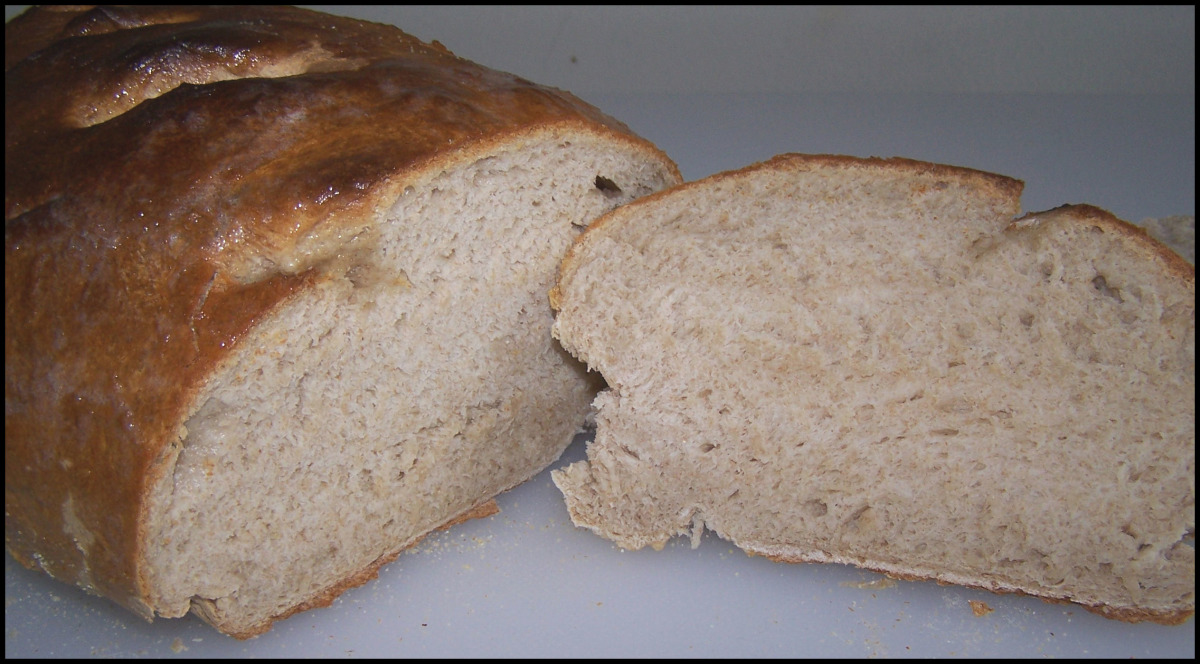
I spent years messing around trying to come up with the ultimate French-style, crisp-crusted bread, and many times came within bragging distance. But with this recipe closely adapted from Paula Wolfert's Country-Style Bread in The Cooking of South-West France - I've found it! It is the simplest of breads: flour, water, salt, yeast. It's good, chewy, coarse, basic: more European than American in taste and texture. Made without fat, sugar or milk, it has a very crisp crust, made even crisper by an in-oven spritzing with water. Thanks to a starter made a day or two ahead of time, it has the faintest tang of sourness. The length of kneading time may seem daunting; so if you do not have a sturdy mixer, have a friend handy.....
Provided by NcMysteryShopper
Categories Yeast Breads
Time 1h
Yield 1 loaf
Number Of Ingredients 8
Steps:
- One to two days before you plan on serving the bread, make the starter; in a medium-size bow. Dissolve the yeast in the warm water and let it proof until foamy. Stir in the flour and mix until smooth. Cover the bowl tightly with plastic wrap and let stand at room temperature.
- On bread-baking day; make the dough: Transfer the starter (don't worry if it has separated) to the large bowl. Add the lukewarm water and the fine sea salt and stir well to combine. Begin adding the flour one cup at a time, beating well after each addition. Make sure each cup is absorbed before you add the next. If the dough is tacky after all of the flour has been added, add an additional one or 2 tablespoons of flour.
- Knead the dough on a lightly floured surface until it is smooth and elastic. This will take 20 minutes by hand; if you have a mixer with dough hook, 8 to 10 minutes will do the trick. If you use a dough hook, do give the dough a few last turns by hand. You want a consistency that is smooth elastic and somewhat soft.
- Flour the inside of a large bowl and place the dough in it. Cover with a clean cloth and let rise in a warm place until doubled in bulk, about 1 ½ to 2 hours. Punch down the dough, and knead it quickly - 15 or 20 turns - then return it to the bowl and let it rise until doubled in bulk a second time. The second rising is usually a little quicker, 1 ¼ to 1 ½ hours. Punch down again, reflour the rising bowl, add the dough, and let rise a third time.
- As the bread is one its third rise, preheat the oven to 450 degrees and have at hand a plastic mister, such as you use for plants, filled with spring water. Place a baking sheet as close in size as possible to that of an oven rack on the middle rack. The sheet mimics an oven floor. Sprinkle a second, smaller baking sheet well with cornmeal.
- When the dough has risen the third time, invert it carefully out of the bowl onto the cornmeal-sprinkled sheet, and using a razor, slash the top with two or three Xs, 1/16 or 1/8 inch deep. Lower the oven heat to 400, spritz the interior of the oven 3 or 4 times with the mister and immediately slide the bread in, on its baking sheet, across the baking sheet already in the oven. Bake the bread 40 to 60 minutes, opening the oven and spritzing the inside once more, halfway through the baking. The bread is done when it is golden brown and sounds hollow when thumped on its bottom. Cool the bread on a wire rack.
Nutrition Facts : Calories 3382, Fat 10.5, SaturatedFat 1.7, Sodium 10490.6, Carbohydrate 709.4, Fiber 37.8, Sugar 2.7, Protein 102.7
CRUSTY COUNTRY STYLE FRENCH BREAD
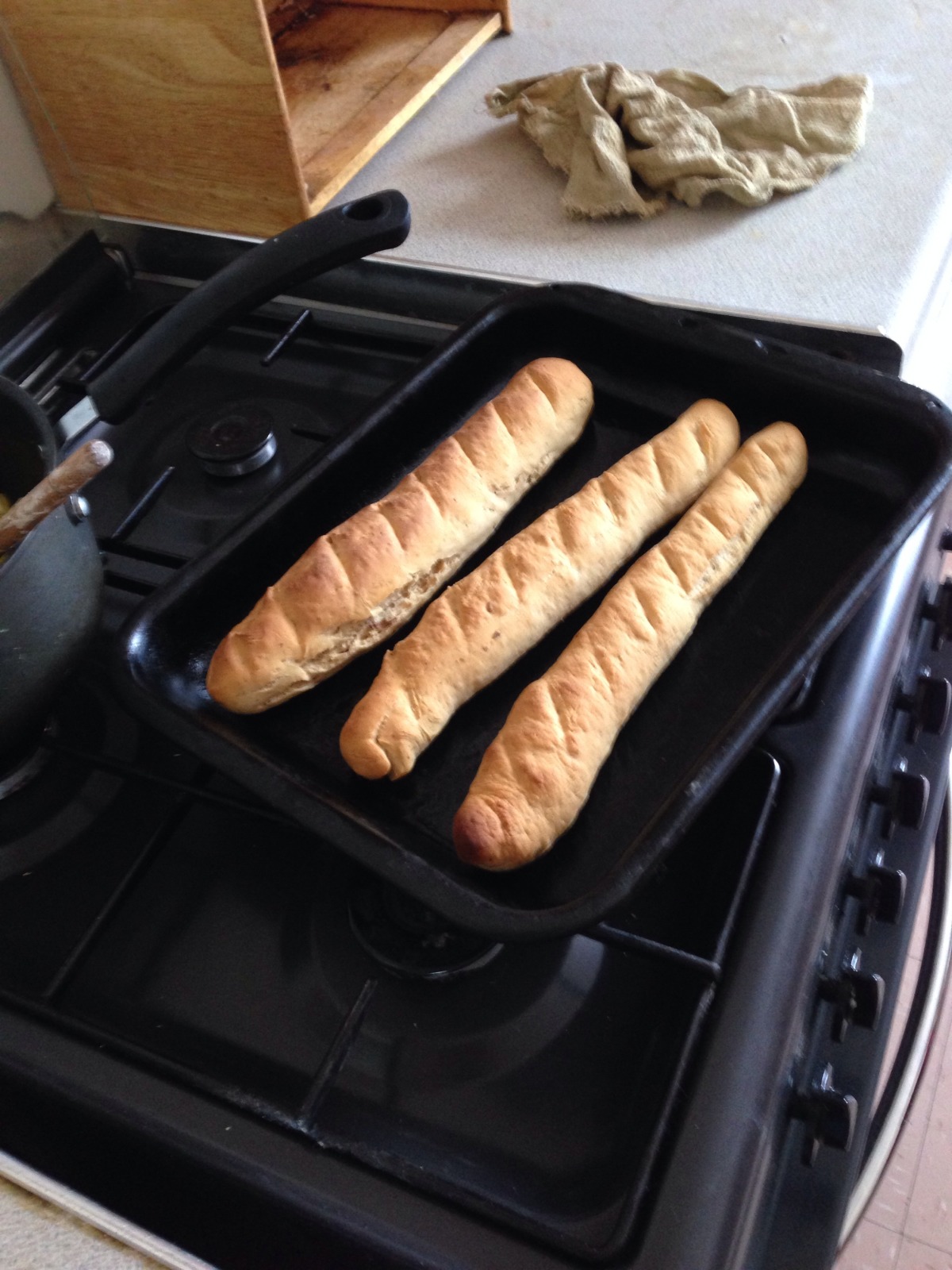
This recipe came with a Williams- Sonoma French Bread pan my In-Laws gave me for Christmas. (I have wonderful In-Laws :)) I have only tried this recipe in the specified pan and it is absolutely delicious! Crusty on the outside and soft and chewy on the inside. The technique is a bit unusual compared to what I was used to, but it is well worth the effort. I don't know if it is the recipe, the technique, the pan, or a combination of all 3 that makes these loaves so tasty, but this is now my standard recipe. Just a note: This recipe prints out on 2 pages. Thought I'd mention it if you want to print 2 sided to save paper ;)
Provided by Brenda.
Categories Yeast Breads
Time 4h10m
Yield 2 loaves, 8 serving(s)
Number Of Ingredients 6
Steps:
- In a small bowl, combine the warm water and sugar, stirring until the sugar dissolves.
- Add the yeast and stir gently to mix.
- Let stand until foamy, about 5 minutes.
- In the bowl of an electric mixer fitted with the dough hook, combine 4 cups of the flour and the salt. Beat on low speed just until combined.
- Slowly add the yeast mixture and beat just until incorporated about 1 minute.
- Increase the speed to medium low to medium and beat for 10 minutes adding more flour, about 1/4 cup at a time, until the dough is elastic and pulls away from the sides of the bowl. (I used speed 4 on my Artisan when I still had it and now use speed 2 with my P600).
- Turn the dough out onto a lightly floured surface and knead for 1 minute.
- Form into a ball and dust lightly with flour.
- Sprinkle a little flour into a bowl and transfer the dough to the bowl.
- Cover with plastic wrap and let rise in a warm place until doubled in bulk. 45-60 minutes.
- Turn the dough out onto a lightly floured surface.
- Punch down the dough and knead for a few seconds.
- Form the dough into a ball and return to the bowl again.
- Cover the bowl with plastic wrap and let rise in a warm place until doubled in bulk. 20- 30 minutes.
- Turn the dough onto a lightly floured surface and punch down.
- Cut the dough into 2 equal pieces and shape each into a ball.
- Let rest 5 minutes.
- Line a french bread pan with a clean kitchen towel (a large flour sack towel works well) and sprinkle with a little flour.
- Roll each ball into a log with tapered ends, about the length of the pan, and place on the towel in the pan. Cover with the overhanging edges of the towel and let rise in a warm place for 20 minutes.
- Position an oven rack in the lowest position of the oven, and place a baking pan 1/3 full of boiling water on the rack.
- Preheat oven to 425 F (220C).
- Gently lift the towel holding the loaves off of the pan, taking care not to let the loaves touch each other and set on a work surface.
- Spray the pan with non-stick cooking spray and using the towel as a guide gently flip each loaf into a well in the pan.
- Brush off excess flour.
- Using a sharp knife, make 3-5 diagonal slashes in the loaves about 1/4 inch deep (6mm).
- Brush with the beaten egg white mixture.
- Bake on center rack until the bread sounds hollow when tapped, about 30-35 minutes.
- Transfer the pan to a wire rack and cool the loaves in the pan until room temperature.
Tips:
- Use high-quality ingredients. The better the ingredients, the better the bread will be.
- Measure your ingredients accurately. This will help ensure that the bread turns out correctly.
- Knead the dough properly. This will help develop the gluten in the flour, which will give the bread a chewy texture.
- Let the dough rise in a warm place. This will help the yeast to grow and produce carbon dioxide, which will make the bread light and airy.
- Bake the bread at a high temperature. This will help create a crispy crust and a fluffy interior.
Conclusion:
French-style country bread is a delicious and versatile bread that can be enjoyed with a variety of dishes. It is a great choice for sandwiches, toast, or simply eating on its own. With a little practice, you can easily make this bread at home. So next time you are looking for a delicious and satisfying bread, give this recipe a try.
Are you curently on diet or you just want to control your food's nutritions, ingredients? We will help you find recipes by cooking method, nutrition, ingredients...
Check it out »
You'll also love




